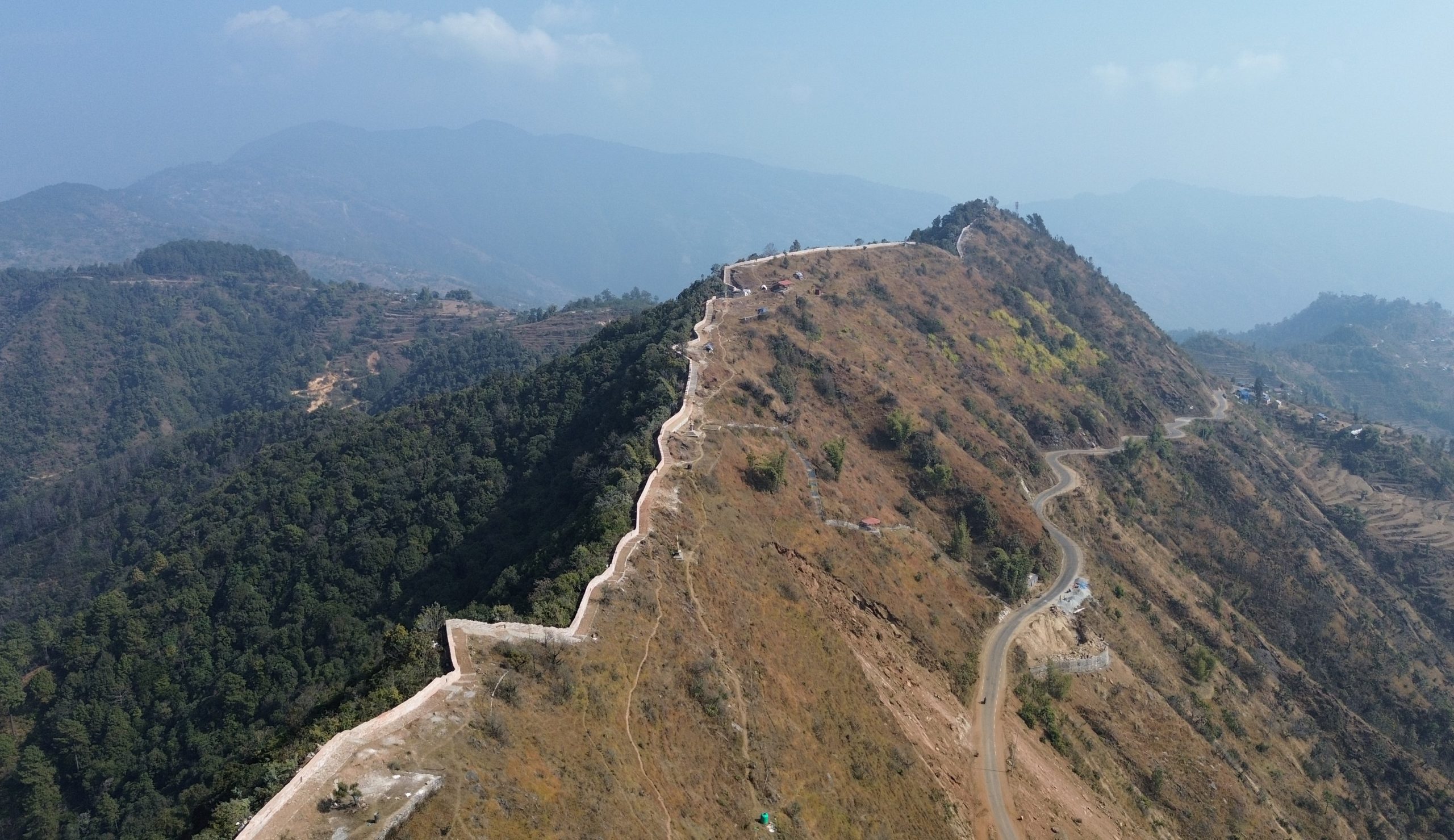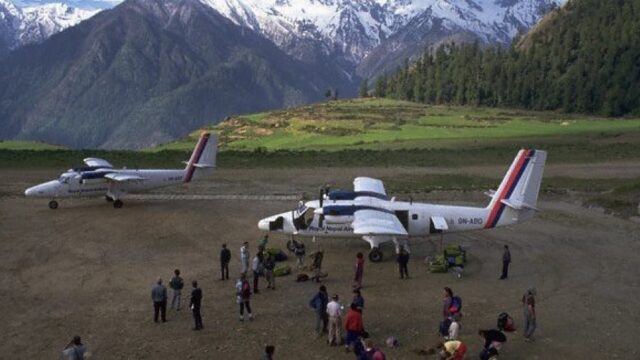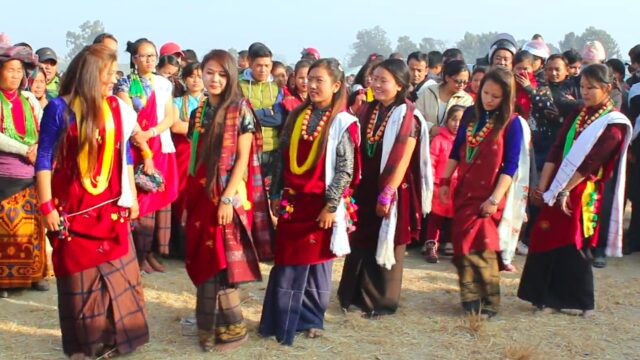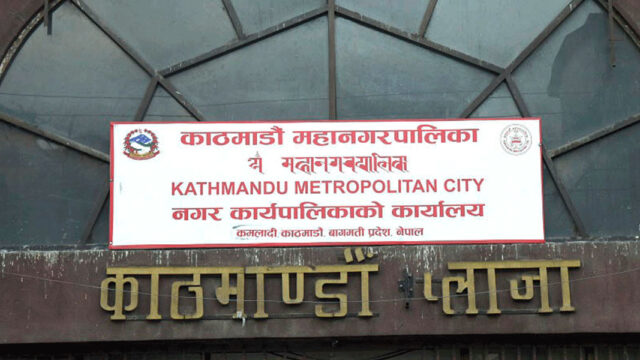The newly constructed footpath at Jayajum has become a major tourist attraction. Located in Halesi Tuwachung Municipality-7, the historic Kirat site of Tuwachung Jayajum now features a 730-meter-long walkway built without concrete but with traditional limestone walls.
The footpath, funded by the Ministry of Culture, Tourism, and Civil Aviation, has been named the “Tuwachung Mini Great Wall” by Halesi Tuwachung Municipality. As a significant site for the Kirat civilization, the addition of this Mini Great Wall has further enhanced the beauty of Tuwachung-Jayajum.
According to Kamal Giri, the spokesperson of Halesi Tuwachung Municipality and Ward No. 7 chairman, the walls of the Mini Great Wall have been built using lime, brick dust, and fly stone. Steps have been constructed on sloped areas using the same materials, while flat areas have been paved with stones and soil to allow grass to grow. The footpath features a two-meter-wide stone wall and has gained popularity among both domestic and international tourists.
Situated at an altitude of 1,800 meters above sea level, Tuwachung-Jayajum is a geographically stunning location. From here, visitors can witness breathtaking sunrise and sunset views, as well as a clear sight of Mount Everest and the surrounding Himalayan ranges on clear days. The panoramic view of the mountains, hills, and the Terai region makes this historic tourist destination even more appealing with the newly built Mini Great Wall.
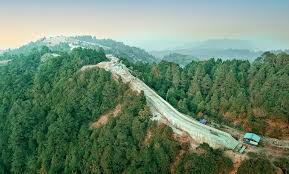
This historic site also features two traditional stone looms known as “Dokham,” where, according to Kirat Mundumi mythology, sisters Tayama and Khiyama used to weave cloth. They are regarded as pioneers of the Kirat textile civilization.
Statues of the Kirat ancestral figure Raichhakule, along with Tayama and Khiyama, have already been erected at Tuwachung-Jayajum. Situated above the renowned religious site of Halesi, the area is also home to the Manjushree Cave footpath and Mangkhim House, built in front of Basaha Cave. The federal government has allocated NPR 58.2 million for these projects.
With the construction of the Manjushree footpath near the world-famous tri-religious site of Halesi, the Tuwachung Mini Great Wall has now been completed. Karnel Samriddhi JV, responsible for the joint construction, is currently developing a two-story parking facility at the entrance of Tuwachung-Jayajum, investing NPR 6 million. The lower level will accommodate two-wheelers, while the upper level will be designated for four-wheelers.
Due to its historical significance, the construction of the Tuwachung Mini Great Wall has avoided the use of cement concrete, according to Halesi Tuwachung Municipality Mayor Bimala Rai. She stated that the project aims to enhance the site’s appeal and attract more tourists.
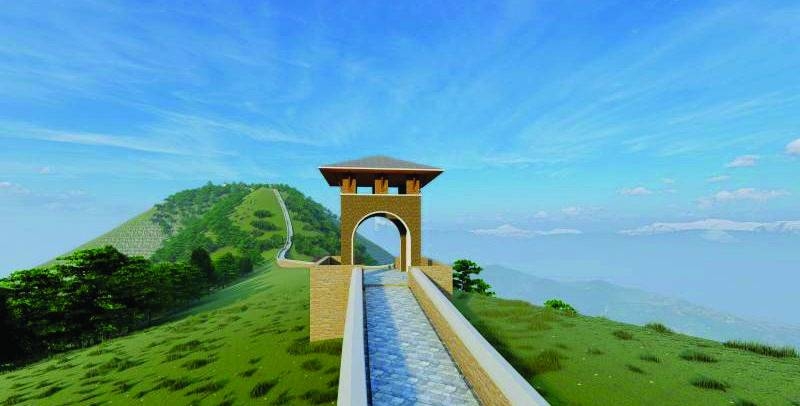
Plans include the physical reconstruction of the site where Tayama and Khiyama used to weave, the installation of a statue depicting them weaving, and the establishment of a tea and coffee park for visitors. Additionally, the municipality plans to offer traditional Kirat cuisine in the area.
The municipality has allocated NPR 3 million for the construction of the weaving statue and NPR 2.5 million for a Kirat cultural house with a garden. Mayor Rai confirmed that these structures will be completed within the year.
Tuwachung-Jayajum, located along the Mid-Hill Highway on the Diktel-Halesi road section, hosts grand Sakela Sili dance performances during the Udhauli and Ubhauli festivals, where rituals are performed at the Three Stoves shrine. Kirat communities from across Nepal, as well as from neighboring regions like Sikkim, Darjeeling, and Bhutan, gather here for these events.
As part of the 100 destinations designated by the government, Tuwachung-Jayajum falls within the Mandum Trail. Interest in studying and exploring the Kirat civilization at this site is increasing. Due to the steep terrain, stone walls were built along the footpath to reduce risks, particularly during Sakela dance festivals, which attract large crowds of domestic and international visitors year-round.
